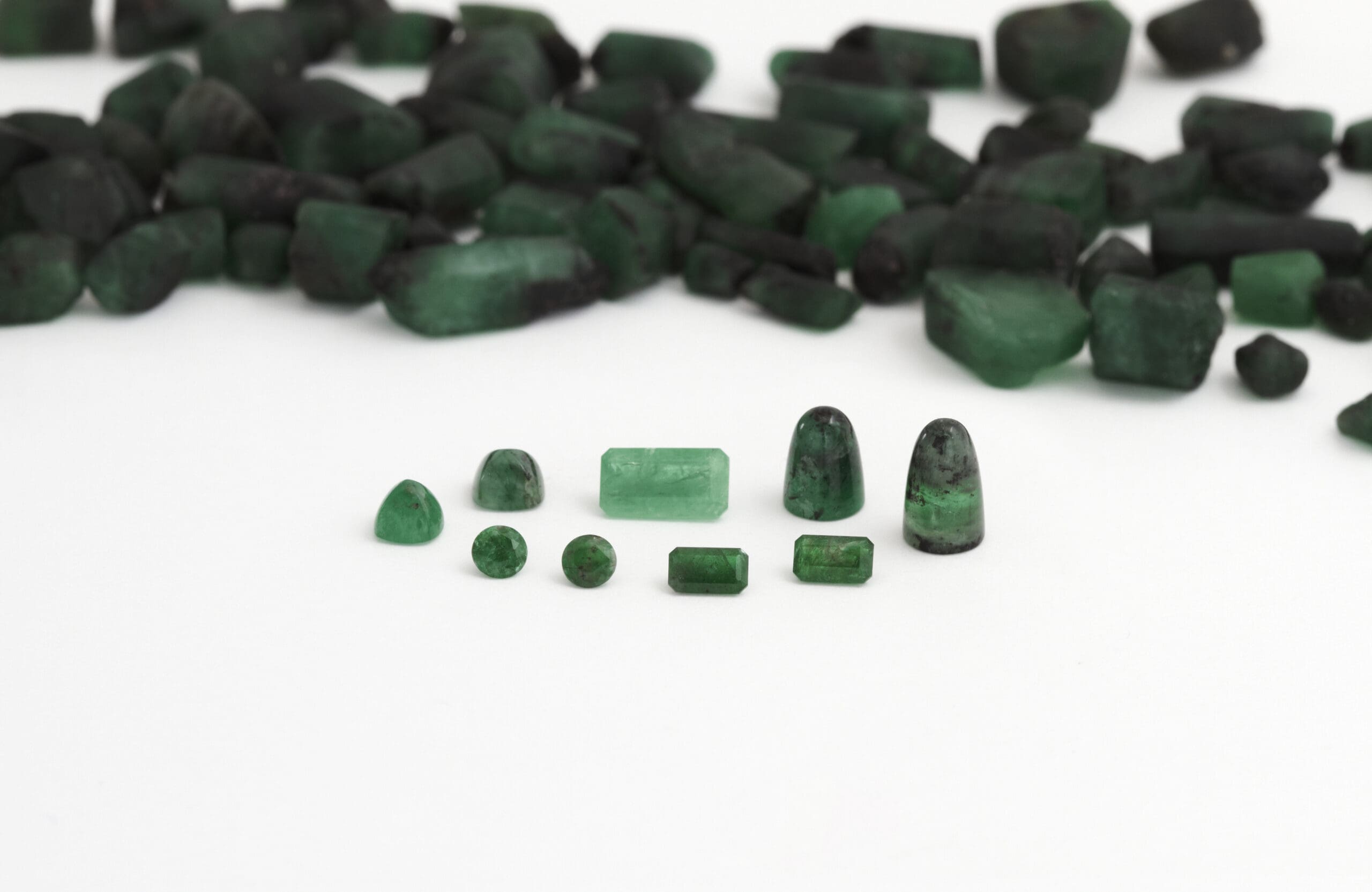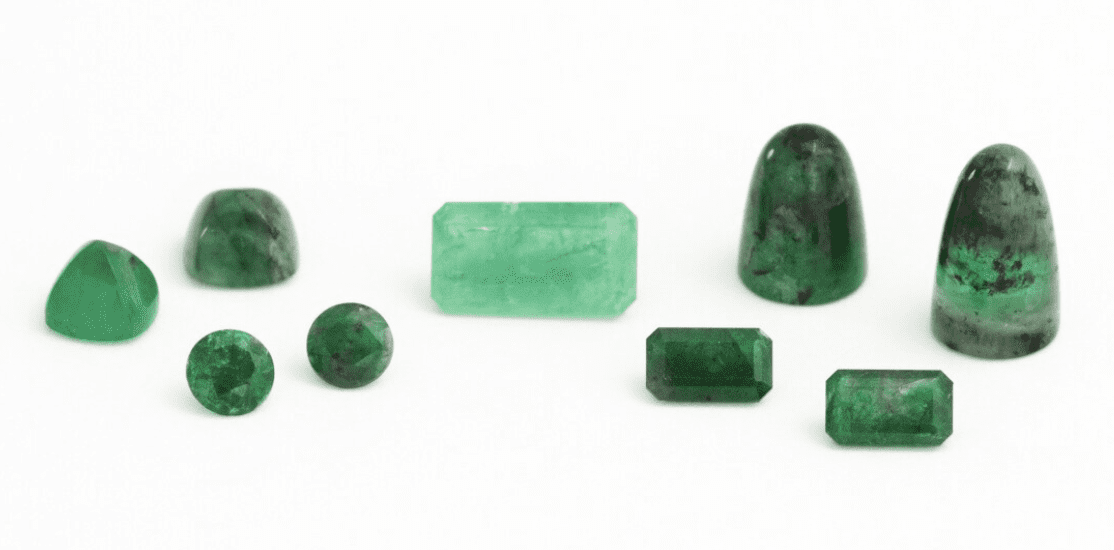At a glance: As the rich green variety of Beryl and one of the “Big Three” gemstones, Emerald’s ethereal glow has withstood the test of time.

To be considered an emerald, a gem must be a bluish green color and medium-to-deep in saturation. Lighter or pastel greens are simply referred to as “green beryl.” The trace minerals chromium, vanadium and iron are what give emerald its rich green color.
“Nothing greens greener than emerald”
—Pliny the Elder, Natural History
Most emeralds have many inclusions (internal clarity characteristics) that are a part of their natural formation in the earth. Natural emeralds are known for this to the point that a great way to tell synthetic (man-made) emeralds from natural ones is if the gem looks “too perfect” or you can’t see a single inclusion.
We happen to love and appreciate natural emerald’s inclusions as unique markers of each gem that help to give them their ethereal “glow!”
Emeralds rank 7.5 to 8 out of 10 on the Moh’s Hardness Scale, meaning they are a bit more susceptible to scratching than other gems such as sapphire and diamond. However, Emerald’s main “caution point” is its brittle nature. Emeralds that are worn in rings must be looked after with great care. They are better worn in earrings and necklaces as these types of jewelry typically are not subjected to nearly as much contact with other day-to-day items.
Does this mean you should never wear emerald rings? Of course not! You should just be sure that the setting of your emerald is the most protective it can be (bezels rule here!)

Cleopatra was obsessed with emeralds, and it’s not hard to see why! In fact, the earliest emerald mines originated in ancient Egypt around 330 BC. Ancient Egyptians thought of emeralds as symbols of life and fertility.
Colombian emeralds were highly sought after and frequently traded by Spanish explorers, which is why we see so many emeralds in European, Ottoman, and Asian royal jewelry.
In Hindu teachings, emeralds are associated with the planet Mercury and are one of the nine gemstones featured in the “Navaratna” style.
Emeralds were thought to be soothing to the eyes, so much so that gemcutters used to keep emeralds on their workbenches to look at after a long day of work faceting other types of gems.
Today, emeralds are associated with new beginnings, peace, and loyalty. Their lush color and association with newness led to it becoming the birthstone for the month of May.

Emeralds are mostly found in Zambia, Zimbabwe, Colombia, and Brazil. However, they can also be found in other East African countries such as Tanzania. The most highly prized emeralds are from Colombia, Zambia and Brazil.